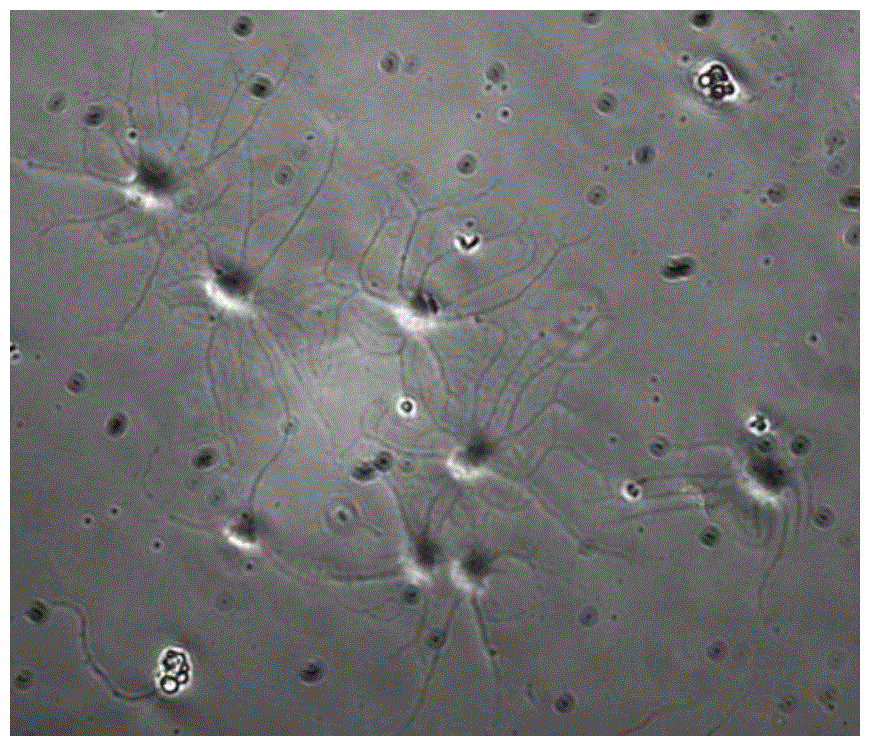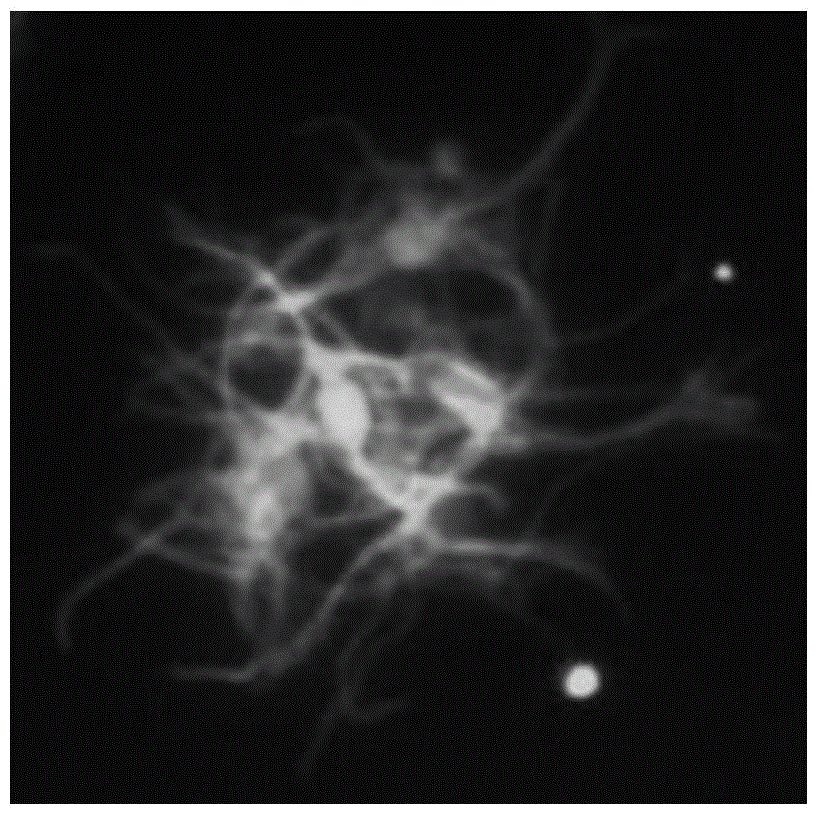Method for separating and culturing trigeminal root ganglion neurons of mammal in vitro and application of method
A trigeminal nerve and mammalian technology, applied in the fields of cell biology and neurobiology, can solve the problems of poor stability of culture medium, impure cells, and many impurity cells, so as to improve the yield and quality of cells and the damage of cells Effect of reducing and stabilizing osmotic pressure
- Summary
- Abstract
- Description
- Claims
- Application Information
AI Technical Summary
Problems solved by technology
Method used
Image
Examples
Embodiment 1
[0036] Embodiment 1: Separation and culture of SD rat trigeminal nerve cells
[0037] 1. Coated culture plate (dish)
[0038] On the day before the culture, add an appropriate amount (just cover the bottom of the dish) of commercially available sterile polylysine solution to the culture plate (dish) to be used, coat for about 30 minutes, and suck out the excess polylysine solution. Polylysine, dry overnight in a biosafety cabinet, and set aside.
[0039] 2. Isolation of Cells from Trigeminal Nerve Tissue
[0040] Take out the bilateral trigeminal nerves of 150-250g SD rats used in the test, place them in cold Hank's balanced salt solution, clean them, remove other adhering tissues, and cut them with ophthalmic scissors or a scalpel. Minced to obtain pretreated trigeminal nerve tissue.
[0041] First, digest with HBSS containing 1.5g / L XI-s collagenase at 37°C for 30 minutes, then continue to digest with 20ug / ml DNase I for 10 minutes, and use DMEM-F12 medium containing 10% ...
Embodiment 2
[0043] Example 2: In Vitro Isolation and Culture of Rat Trigeminal Ganglion Cells
[0044] 1. Coated culture plate (dish)
[0045] On the day before the culture, add an appropriate amount (just cover the bottom of the dish) of commercially available sterile polylysine solution to the culture plate (dish) to be used, coat for about 30 minutes, and suck out the excess polylysine solution. Polylysine, dry overnight in a biosafety cabinet, and set aside.
[0046] 2. Isolation of Cells from Trigeminal Nerve Tissue
[0047] The trigeminal nerve of the 8-12-week-old rats used in the test was taken out and placed on a petri dish containing L-15 culture solution. The above process was performed on ice, and then cleaned to remove other adherent tissues. Mince it with ophthalmic scissors or a scalpel to obtain the preprocessed trigeminal nerve tissue.
[0048] First, treat the pretreated trigeminal nerve tissue with 5 mL of 200 U Type 11 collagenase obtained by diluting 4.5 mL of L-15...
PUM
 Login to View More
Login to View More Abstract
Description
Claims
Application Information
 Login to View More
Login to View More - R&D
- Intellectual Property
- Life Sciences
- Materials
- Tech Scout
- Unparalleled Data Quality
- Higher Quality Content
- 60% Fewer Hallucinations
Browse by: Latest US Patents, China's latest patents, Technical Efficacy Thesaurus, Application Domain, Technology Topic, Popular Technical Reports.
© 2025 PatSnap. All rights reserved.Legal|Privacy policy|Modern Slavery Act Transparency Statement|Sitemap|About US| Contact US: help@patsnap.com



